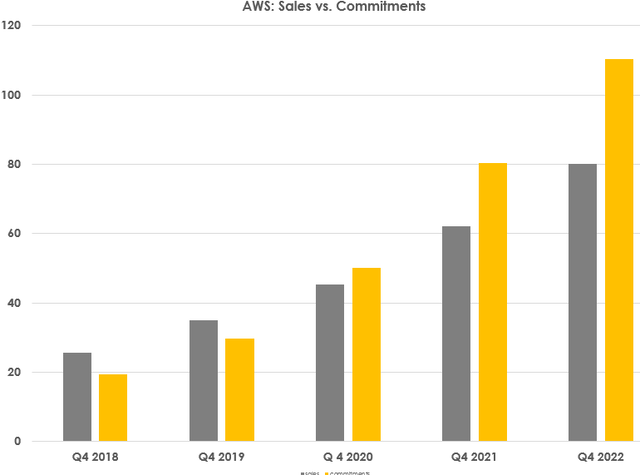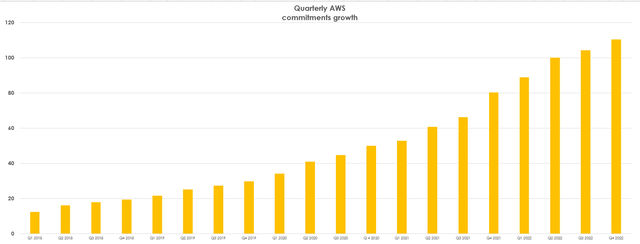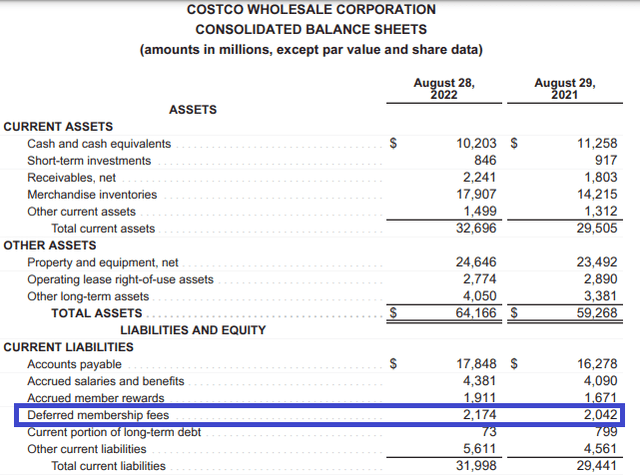Summary:
- It is no secret that Jeff Bezos found Costco’s business model very inspiring to build Amazon.
- Costco’s membership model led Jeff Bezos to the launch of Amazon Prime, where members pay less than the value they get, but offer the company an even greater lifetime value.
- After looking at how membership works, we look at how both companies manage unearned revenues and how Amazon has brought this a step further.
mrgao
Introduction
“Amazon is Costco on steroids”. These are words I once read in a comment on Seeking Alpha. In this article, we will consider an aspect not usually as covered as other parts of both companies. Remember, when I deal with very large companies, my approach is to research one aspect at a time, using what I call a fractal analysis method, with the assumption that every single part of the company has some statistical character as the whole business has. Fractals are, in fact, geometrical figures in which similar patterns recur at smaller scales, as in a snowflake. This time, we will start from my previous article “The Influence of Costco On Amazon Prime” and then move on to see how Amazon is expanding one of Costco’s strengths: unearned revenue.
Costco and Amazon Prime
In 2001, Jeff Bezos met Jim Sinegal, founder and then CEO of Costco (NASDAQ:COST). Bezos learned the difference between retailers that work to figure how to charge more and those working to figure out how to charge less. Needless to say, Costco belongs to the second group. Jeff Bezos understood Costco’s focus on delivering value and after this meeting told Amazon (NASDAQ:AMZN) senior management that the company would have started cutting prices by 20-30%.
Bezos learned the secret behind Costco’s success. The focus is not on markup margins, but rather on membership fees. This led to the creation of Amazon Prime.
Amazon understood how Costco makes most of its money from membership fees that are perceived as offering very good value for those who sign up.
Over the years, Amazon has thus started building a membership based model that has become a truly unique ecosystem. Amazon Prime now offers to its members a greater value compared to the annual fee. In exchange, Amazon knows that each Prime member is worth much more than the yearly fee paid, as Prime member are more engaged, purchase more and keep on renewing the subscription. In my past articles I used the Lord of the Rings series as an example to calculate the lifetime value for Amazon of a current Prime member: $1,317,14.
Unearned revenue
Costco
Let’s be brief and let’s get straight to the point, beginning from Costco.
Let me show you one of my favorite parts of Costco’s annual report. I am paying more and more attention to this part, as I think it is often underestimated. I am talking about deferred membership fees, which are accounted for under current liabilities.
As Costco states in its Annual Report: “We account for membership fee revenue on a deferred basis, recognized ratably over the one-year membership period”. At the end of fiscal year 2022, the company had well over $2 billion of deferred fees.
Now, this is a liability and some people may overlook it because it is “bad”, since it is something the company owes. However, this unearned membership liability must be understood. In accounting, we talk about accruals and deferrals. In particular a deferred revenue is reported as a liability because it is revenue already received in cash but still to be earned through offering the service that was paid for. Let’s say make an example with a gold star membership costing 60$. Let’s assume it was paid for at the beginning of Q4 2022. Costco will have to split the $60 under two different items. In fact, a quarter of this membership belongs to FY 2022, while the other three quarters belong to FY 2023. Therefore, at the end of 2022, 75% of those $60, although already paid for in cash, still need to be earned. This generates a $45 liability.
However, here is the point, this is not at all a “bad” liability. In truth, this is a pretty good perpetual loan at no interest. And it is actually growing year after year. It is money Costco has at no interest and that it can use for whatever it needs to. With interest rates rising, the impact of this zero-interest loan is even greater as it enables Costco to save a lot of money and run its business without needing to borrow money. In addition, Costco is net debt negative, meaning it has more cash than debt. Thanks to its conservative balance sheet, Costco has a balance sheet as strong as a fortress.
Amazon
Amazon has two sources of unearned revenue: Amazon Prime memberships and prepayments of AWS services. At the end of 2021, Amazon’s total unearned revenue was $14 billion. At the end of 2022, it was $16.1 billion, a 14.3% increase YoY. These numbers speak for themselves: $16 billion paid upfront is quite a generous loan. Considering Amazon’s capital expenditures in 2022 were $55.4 billion, Amazon has a zero-interest loan that covers 29% of these investments. Quite an achievement.
However, what I consider impressive and what I see is rarely pointed out is another step Amazon has taken.
I am talking about AWS. Most people are concerned with its yearly growth in terms of sales. Investors’ eyes are watching, worried to see a slow-down in growth that would make the stock even less appealing than it has been in the past two years.
With AWS, Amazon has brought its subscription model a step further. Customers who need these services sign up a contract that has longer life-time compared to an annual membership. This creates a simple, yet striking, situation: most of AWS profits are in the pipeline, but they are locked in through contracts. This is even more than an unearned revenue because it creates a stream of incoming revenue that is still not accounted for, but that will inevitably impact Amazon’s future reports.
While may only look at AWS sales, if we read carefully Amazon’s reports, from 2018 onwards we find a paragraph that describes unearned revenue.
In this paragraph we also find the value of AWS commitments not yet recognized.
Below, I made a graph showing in grey AWS sales reported at the end of every fiscal year. In yellow we see the commitments not yet recognized. Since 2020, future commitments have surpassed total AWS sales and are creating a snowball effect.
Author, with data from AMZN Annual Reports
In its 2022 Annual Report, Amazon writes:
For contracts with original terms that exceed one year, those commitments not yet recognized were $110.4 billion as of December 31, 2022. The weighted average remaining life of our long-term contracts is 3.7 years. However, the amount and timing of revenue recognition is largely driven by customer usage, which can extend beyond the original contractual term.
Let me repeat this number: $110.4 yet to be recognized with an average remaining life of 3.7 years. This is a lot of revenue in the pipeline, and one of the revenues I like the most, since AWS is a high margin business for Amazon.
Let’s look at another graph, which I like even more. Here we see the quarterly AWS commitments since 2018. We see a steady growth that quickly brought future commitments from $12.4 billion at the end of 2017 to $110.4 at the end of 2022. The CAGR is 54.85%.
Author, with data from AMZN quarterly reports
What no number can show is how sticky AWS is and, thus, how resilient these revenues are. Actually, we can partly see this from the constant growth which shows, on one side, how AWS users step up their subscriptions, on the other, how churn is very low, just like Costco.
Conclusion
AWS operating margin was 24.3% at the end of 2022, but it usually has been above 30%. Given the stickiness of the product and the future revenues this will generate, I would not be afraid to pay 10 times last year’s sales. This means that AWS could be easily worth $800 billion, which is close to Amazon’s current valuation of $962 billion. I think the rest of Amazon is worth much more than $162 billion. This is why I just increased my stake in AMZN stock, as I had promised I would do in a previous article on two of my favorite picks for 2023.
By the way, I bought more COST stock, too, but I will write soon another article explaining why I think it is wise to take advantage of the few dips this stock offers once or twice a year.
Disclosure: I/we have a beneficial long position in the shares of COST, AMZN either through stock ownership, options, or other derivatives. I wrote this article myself, and it expresses my own opinions. I am not receiving compensation for it (other than from Seeking Alpha). I have no business relationship with any company whose stock is mentioned in this article.

